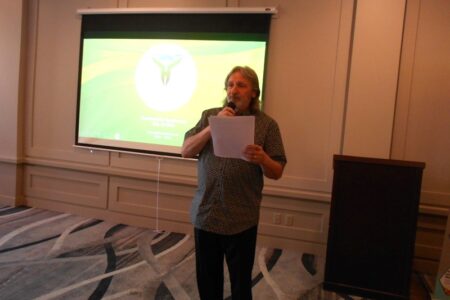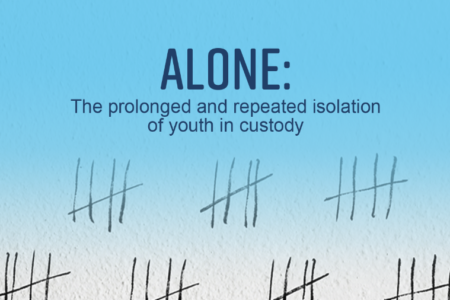Re-inventing the Wheel and Electoral Reform
How should we vote? How should the people of Canada be represented in our federal government? How should members of Parliament be elected? On September 1st at the Fireside Inn in Castlegar, a number of citizens interested in these simple yet profound questions met with our local MP, Richard Cannings, to talk about electoral reform.
Cannings started the evening off by explaining that both the governing party, the Liberals, and his own party, the NDP, had campaigned on a promise that the 2015 federal election would be the last one in Canada under “First-past-the-post.”
He went on to explain that each electoral system has its benefits and also its downsides. There is no one system that is objectively the “best” for all places — there are trade-offs with each system. He laid out five principles guiding the search for a better electoral system:
1. Effectiveness and legitimacy: reducing distortions and strengthening the link between voter intentions and the electoral result;
2. Engagement: encouraging greater participation;
3. Accessibility and inclusiveness; this includes avoiding undue complexity in the voting process;
4. Integrity; safeguarding the integrity of the process;
5. Local representation and its accountability.
(Readers can use this link to register their opinions of the importance of each of these principles, and a few other things too.)
Then Cannings presented a précis of the different electoral systems in use around the world, starting with the one Canada uses, along with 57 other countries including the UK and India: commonly referred to a “First-past-the-post” or “FPTP” for short. This system, as most people know by now, is non-proportional — that is, the number of MPs elected to Parliament for any given party tend NOT to reflect their party’s share of the popular vote — the total number of votes cast. This system is, famously, how parties with around 39% of the popular vote have garnered a majority of the seats in Parliament.
This system works best when there are only two political parties, but even then it is not proportional; “gerrymandering” can rig elections to favour one of the parties. On the other hand, MPs tend to represent the people in their ridings — or at least, the interests of the members of their own party in those ridings.
Cannings then explained how the “alternative vote” system (used in only two countries — Australia and Papua New Guinea) works: if used alone in single-member ridings, it is a non-proportional system. Voters are required to rank candidates in order of preference. It is also known by several other names, no doubt adding to our confusion about the number of electoral systems and what they mean; if you hear “ranked ballot”, “supplementary vote”, “instant run-off”, “AV” or “preferential voting” — those are all “alternative vote.”
Moving on to proportional systems, he explained the one used in 83 countries around the world, including Denmark, Norway, and Spain: “List” Proportional. There are two main variations, “closed list” and “open list.”
In closed-list systems, voters just vote for the party of their choice. One virtue of this system is its simplicity and ease of administration. The party has a list of candidates, and the number of each party’s candidates who become MPs depends on that party’s share of the popular vote. But, as Cannings pointed out, our political parties already choose who represents them; he acknowledged that more people in this riding probably voted for him because of his party than who voted for him because of his personal attributes, or as he put it, “because they like bald guys.”
In open-list systems, voters can vote for the political party of their choice, and also for a candidate. This can influence which candidates on the list are chosen as MPs.
There is usually a minimum percentage of votes imposed for a party to gain any seats in Parliament, such as 1% or 3%. Once that threshold has been reached, the party will be represented by the percentage of the parliamentary seats that reflects its percentage of the popular vote. (It is interesting to note that the Law Reform Commission of Canada report, noted below, recommends against a minimum threshold for access to list seats.)
Cannings then moved on to describe the system known as “Mixed-Member Proportional” or MMP. His party thinks that system would work best for Canada; it is used in nine countries, including Germany and New Zealand. With MMP, voters get two votes — one for a candidate in their riding, and one for a political party. The riding candidate can be elected according to which one gets the most votes on a simple FPTP ballot, or by using an alternative vote ballot. Then party candidates are chosen from each party’s list to ensure that each party has a percentage of MPs that closely matches its share of the popular vote — on the “party” vote on the ballots.
Cannings also explained the “Single Transferable Vote” or STV system, which is classed as “semi-proportional” and is used only in Ireland and Malta.
In STV, there are larger ridings with more than one MP per riding. Voters use a preferential ballot to rank candidates. To be elected, any candidate must win a certain number of votes – a “quota” set by a formula taking into account the number of seats in the riding and the number of votes cast in that riding. Because of the ranked ballots, the ballot-counting process can be lengthy, requiring several rounds of ballot-counting to “transfer” second- and third-choice votes, so the results of an election are not known immediately. There is also no assurance of closely proportional results.
After reviewing the features of the different electoral systems, Cannings opened the mic to speakers from the floor, who expressed a number of opinions. The majority of speakers pleaded for proportional representation. One man from Nelson spoke against holding a referendum on electoral reform, saying that referendums are too easily co-opted. He won a big burst of spontaneous applause when he stated, “Referendums are stupid!”
One woman said that she thought the process of changing our electoral system shouldn’t be rushed, and that four years is too short a time to attempt it and to educate voters and put all the necessary mechanisms in place. She thought Canada should not attempt a change before the 2019 federal election. Most of the audience did not appear to agree, judging by the civil but unenthusiastic response.
Cannings provided a link to an organization that has summed up the features of the different electoral systems from a neutral point of view, and in much greater detail than provided here: for a clearer and more complete explanation of each, go to
http://www.samaracanada.com/samara-in-the-classroom/electoral-reform/introduction and the pages following; each system is featured on a separate page.
Back in 2004, the Law Reform Commission of Canada issued a report which examined our electoral system and analysed various other options in great detail, and ultimately recommended a Mixed-Member Proportional system for Canada, along with 22 other recommendations. You can view the outline of that report here. If you’re keen and would like to see the entire 232-page report in a PDF form, click here, and then click “continue to PDF” on the right-hand side of the screen. It’s a comprehensive document. Are we all labouring to re-invent the wheel on electoral reform for Canada? Or do we need to re-invent it before we’ll accept it as a good thing?
























